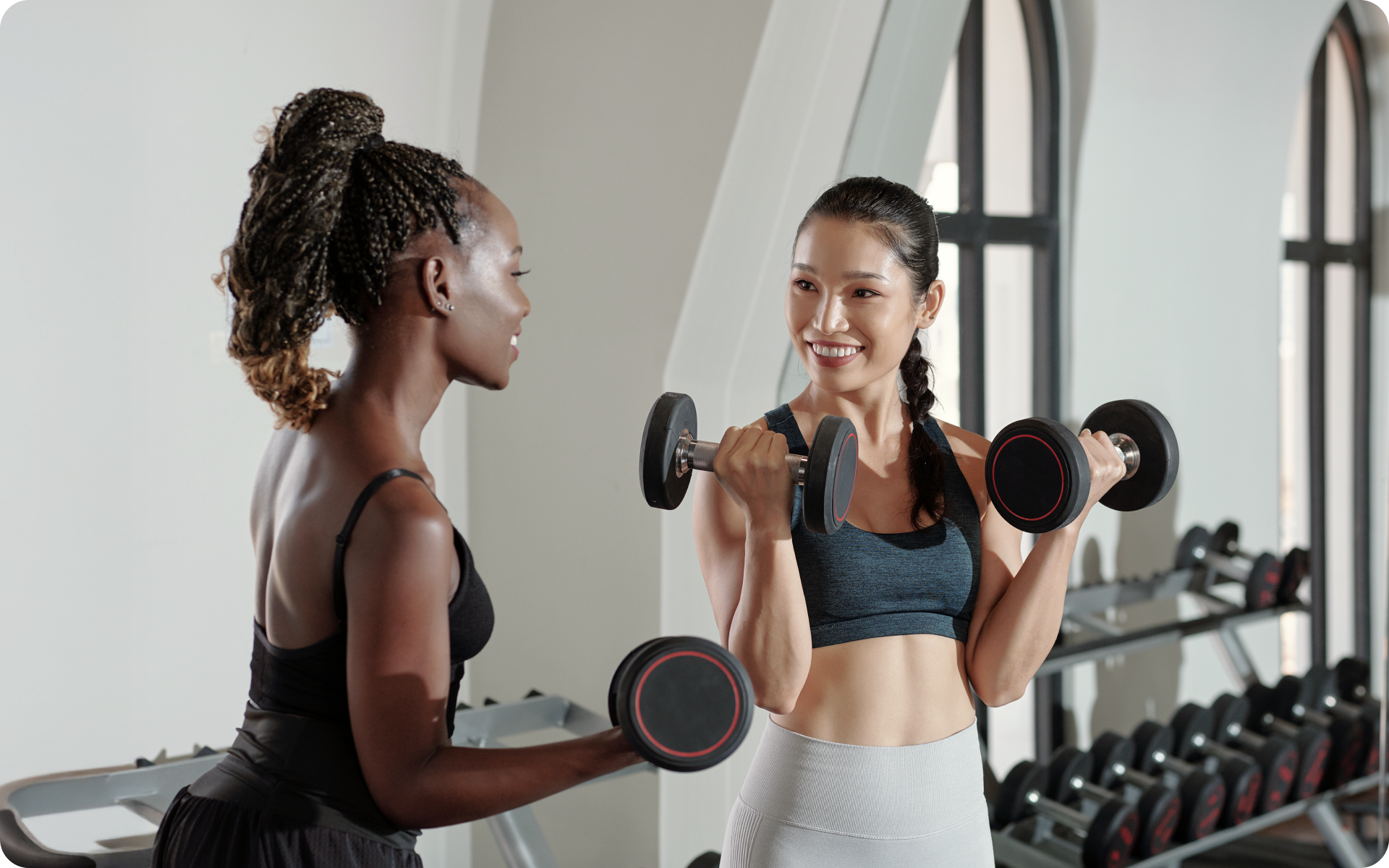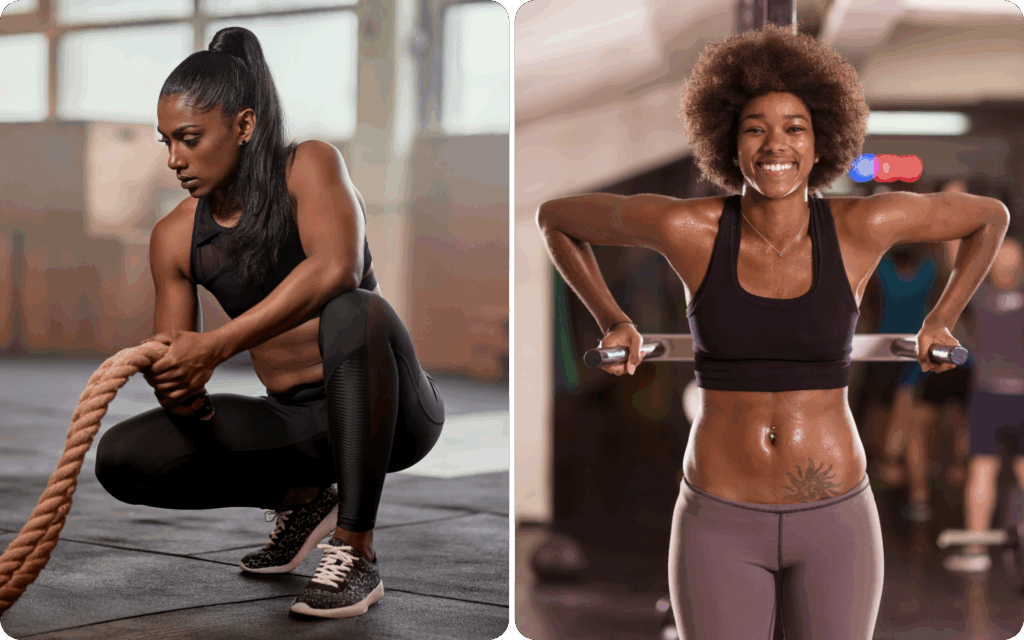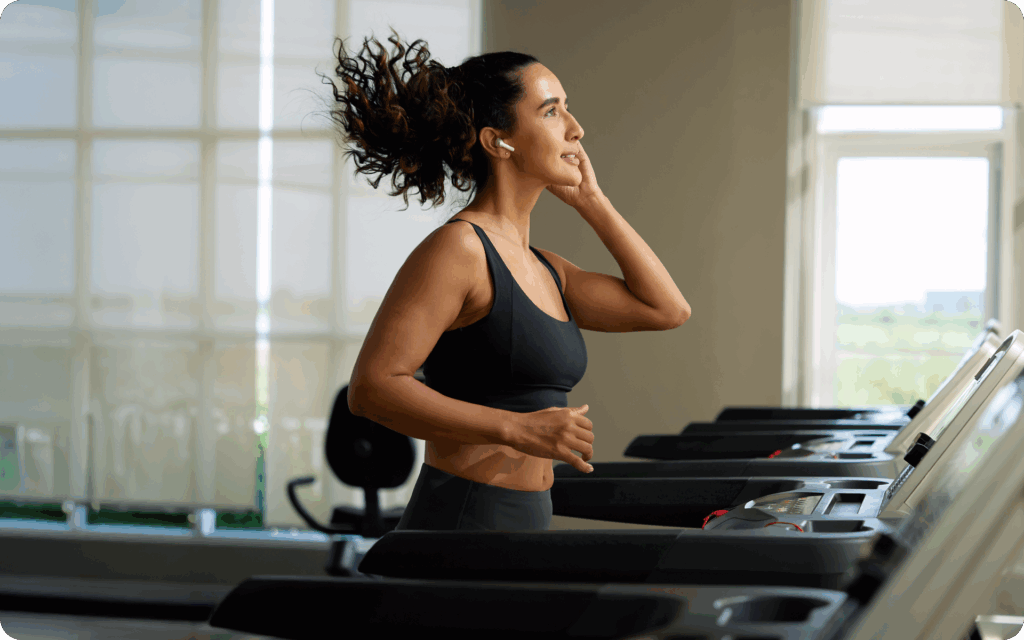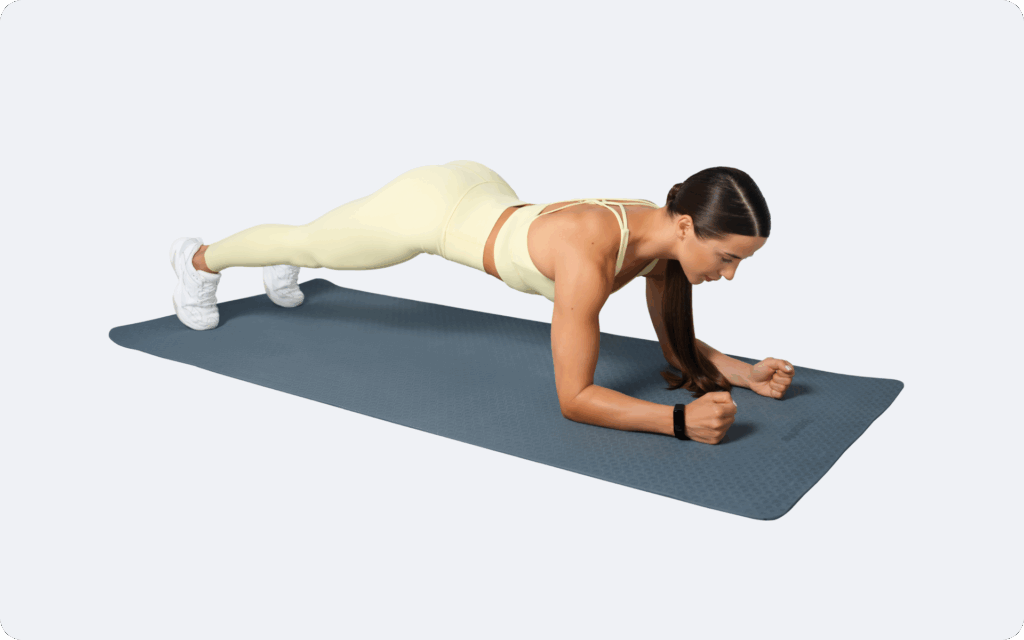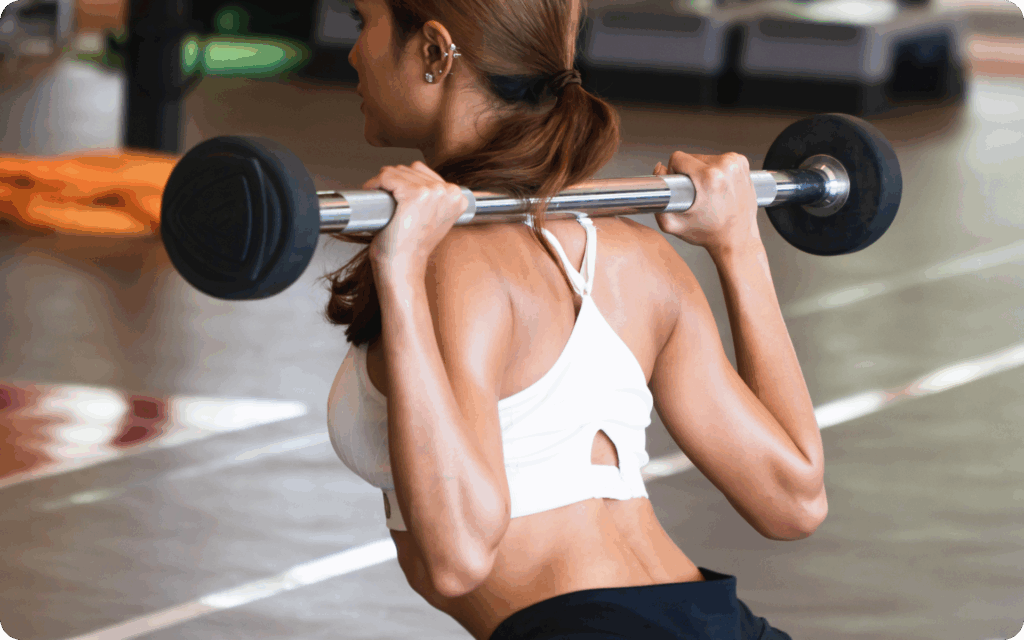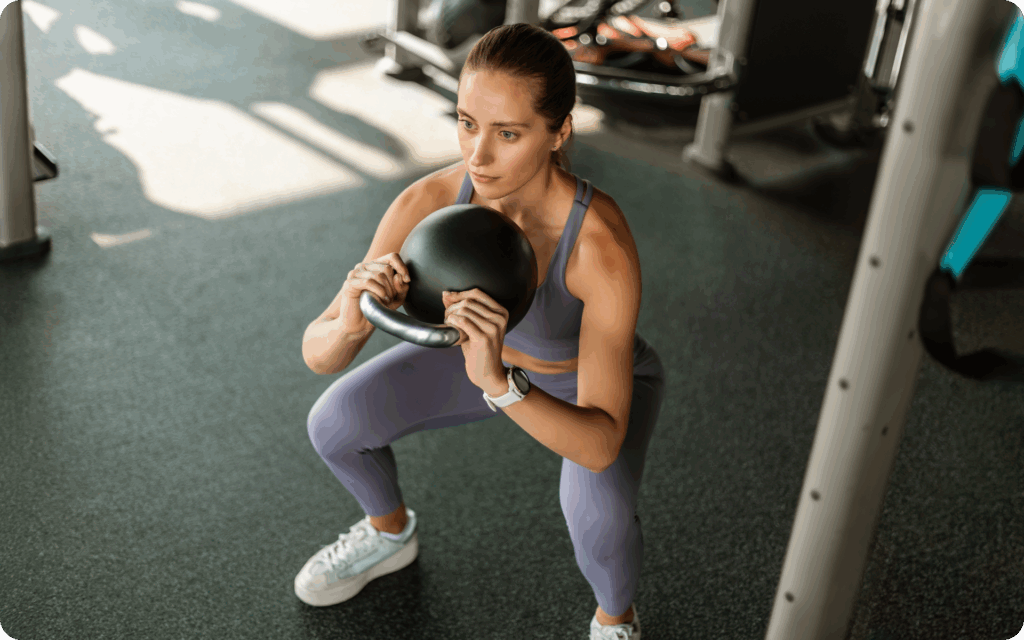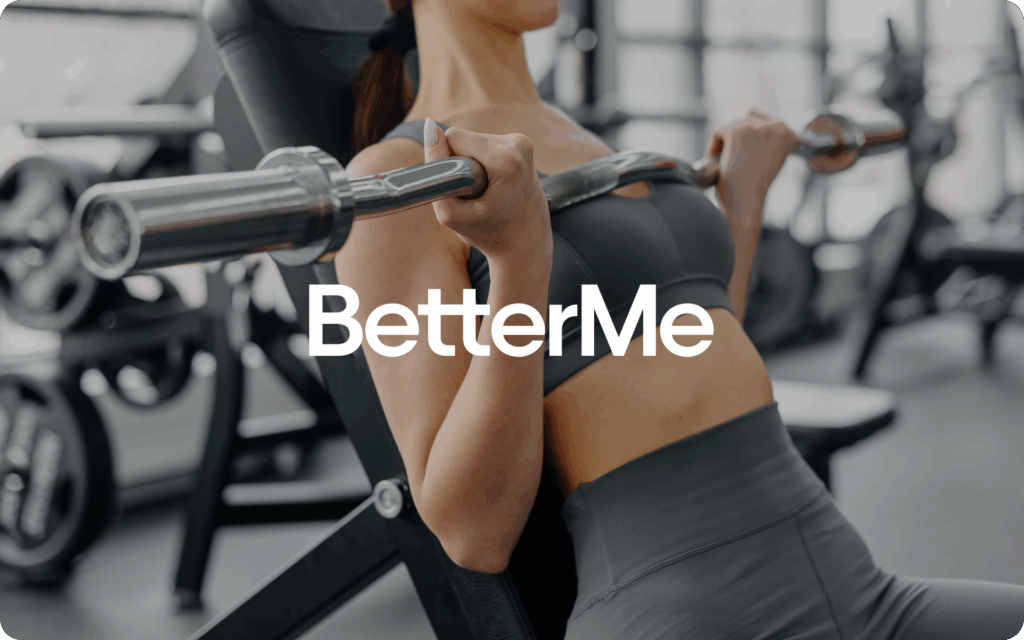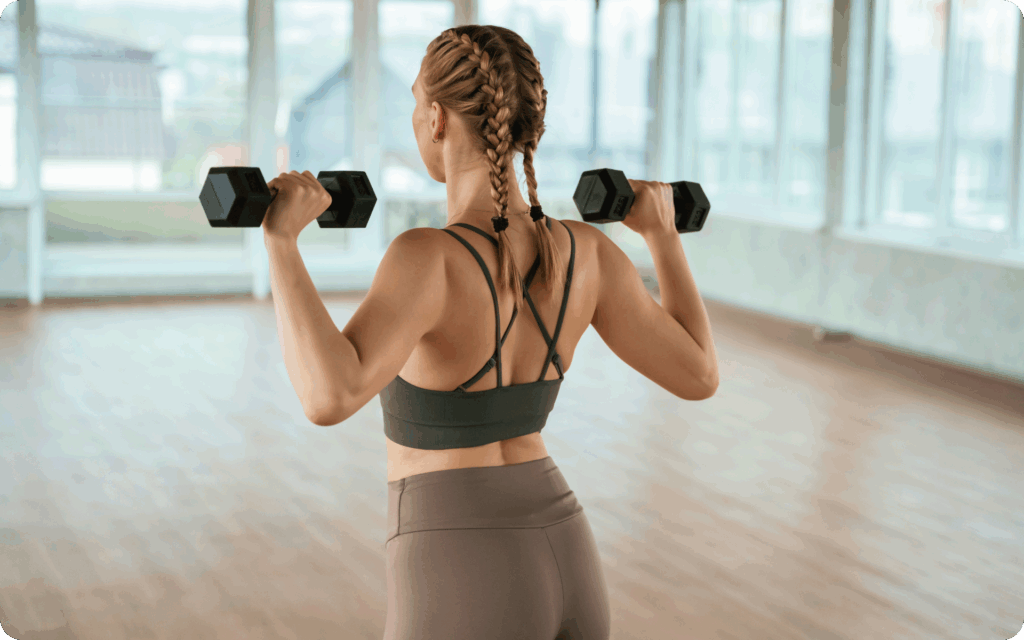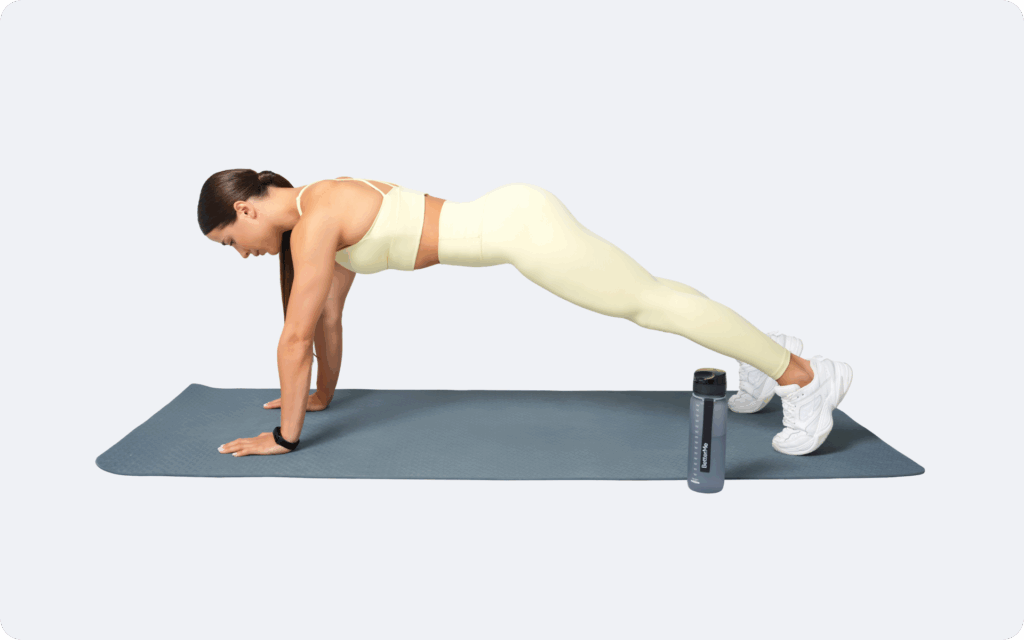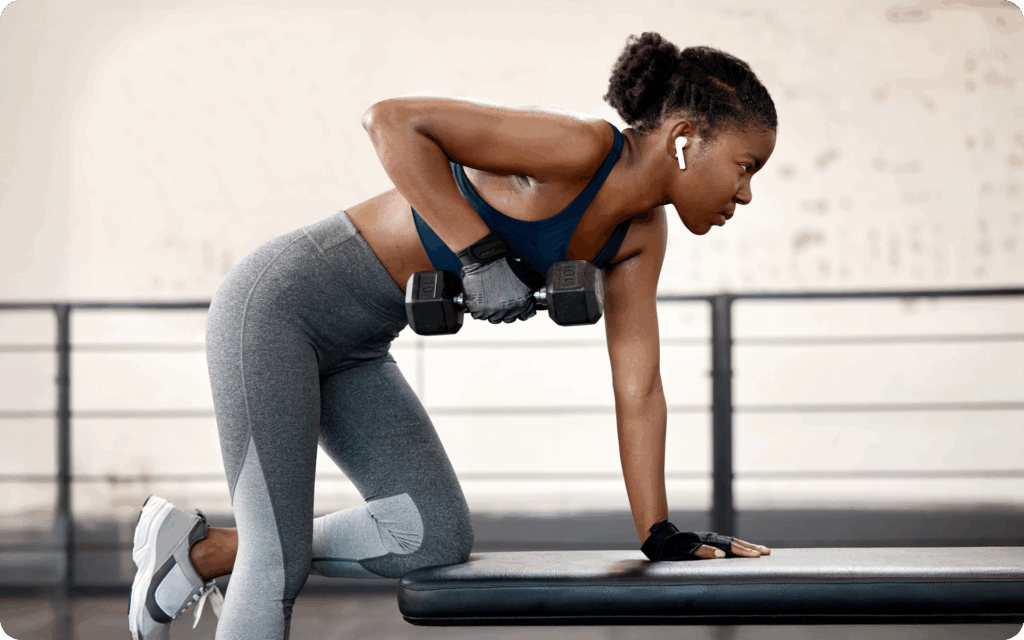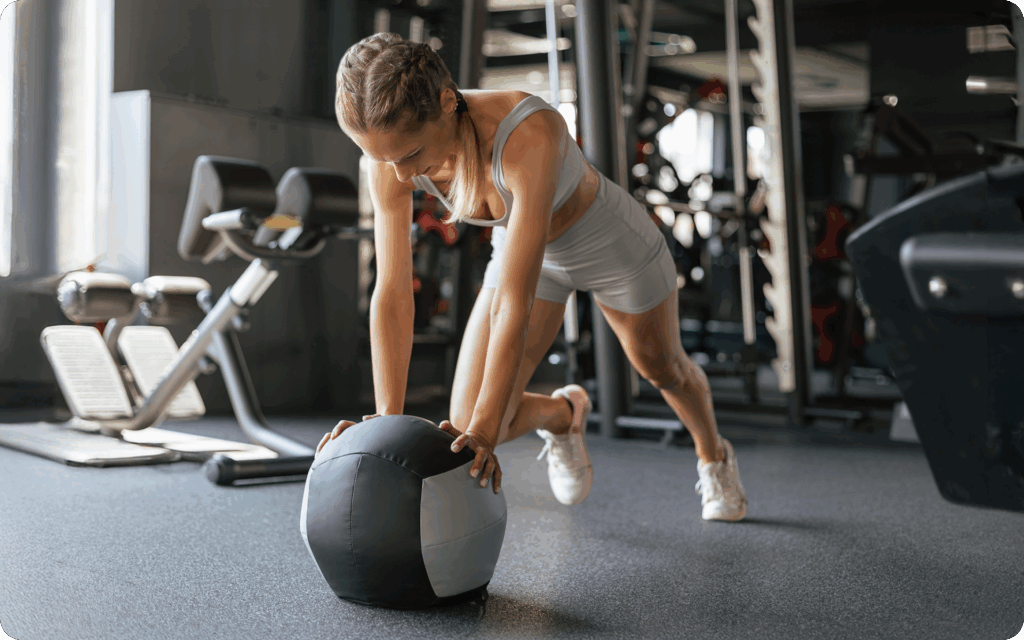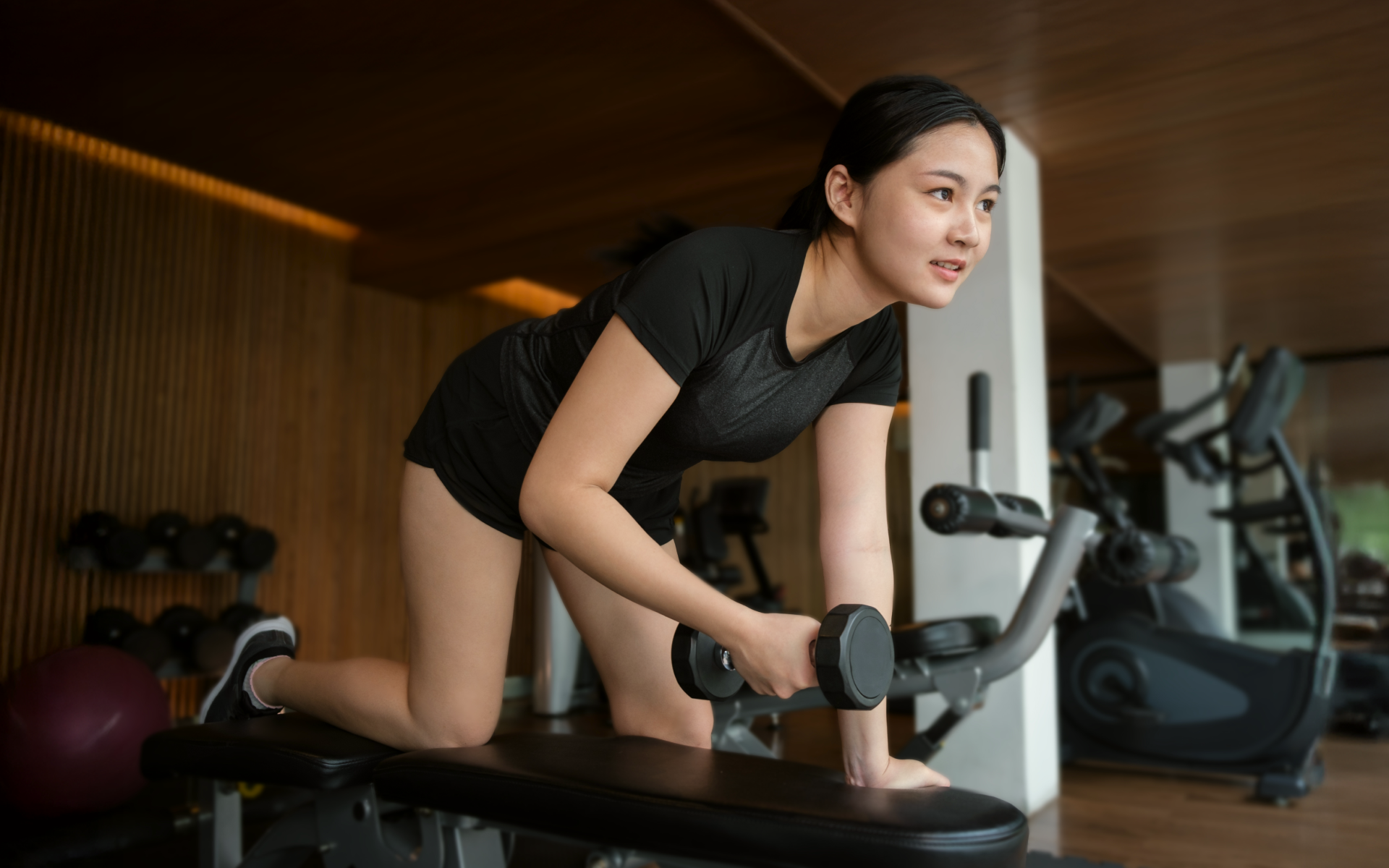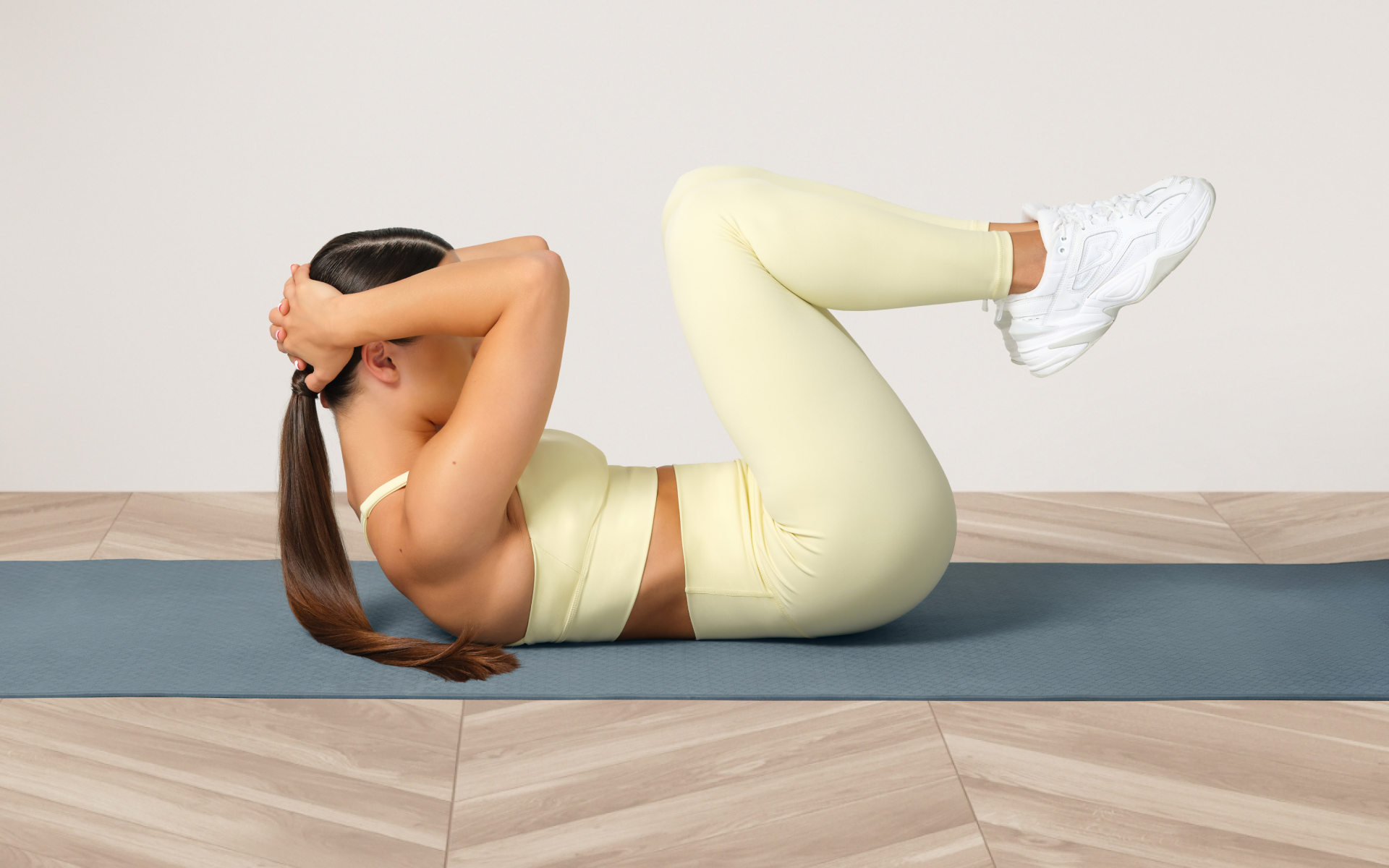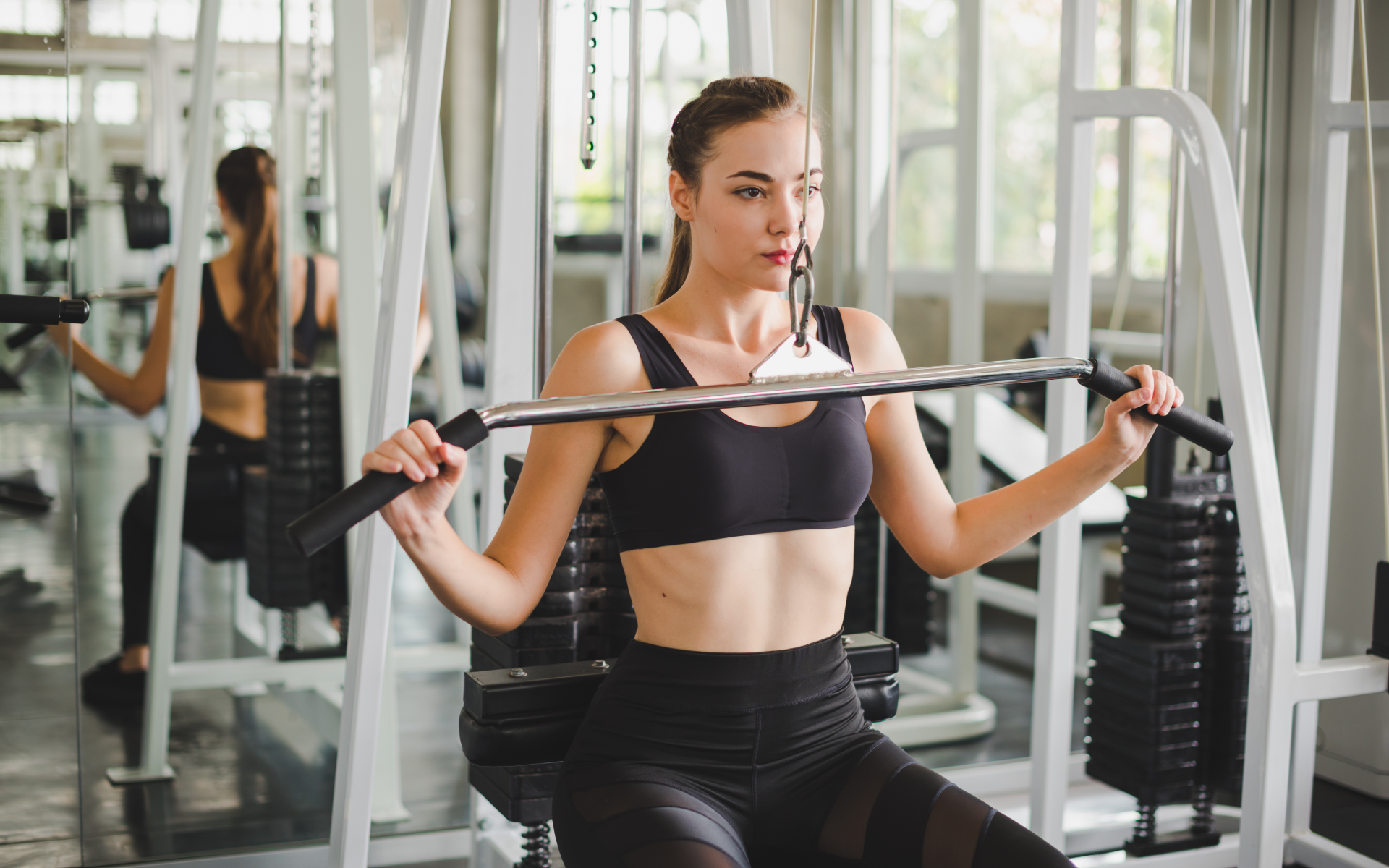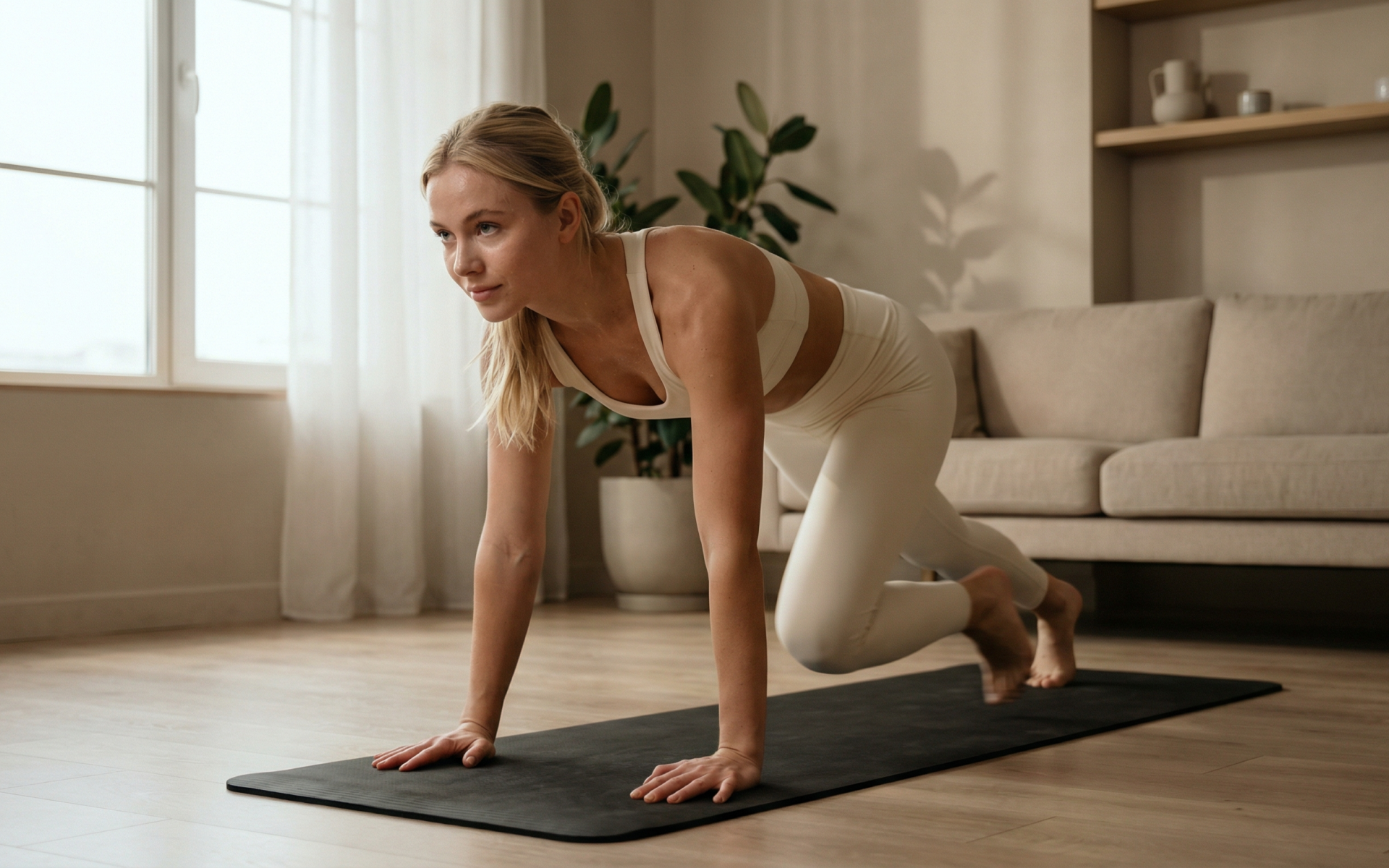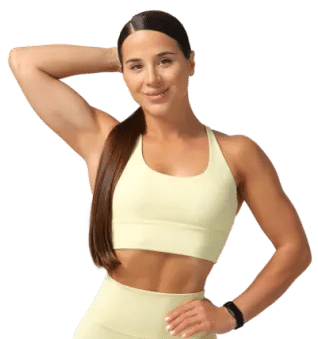Starting your fitness journey can feel overwhelming – you walk into a gym, see rows of equipment, and wonder where to begin. This comprehensive guide will transform that uncertainty into confidence and provide you with evidence-based strategies to build a sustainable gym workout routine for beginners that supports both your physical and mental well-being.
Is the Gym Good for Beginners?
A gym environment offers unique advantages for beginners that home workouts simply can’t match. According to the National Strength and Conditioning Association (NSCA), resistance training forms the foundation of effective fitness programming, and gyms provide the progressive overload that is necessary for continuous improvement (1).
Experts recommend 150 minutes of moderate-intensity exercise weekly, plus two strength training sessions (2). Gyms make these goals achievable through:
Cardiovascular Equipment: This helps you build aerobic capacity while monitoring heart rate zones for optimal training and includes:
- Treadmills
- Ellipticals
- Stationary bikes
These pieces of equipment will allow you to control intensity and track progress precisely
Resistance Training Options: Resistance training provides the progressive overload your muscles need to adapt and grow stronger. You can find numerous types of resistance training equipment inside gyms, including:
- Free weights
- Machines
- Cable systems
This variety prevents plateaus and keeps your workouts challenging.
Whether you’re a workout beast or just a beginner making your first foray into the world of fitness and dieting – BetterMe has a lot to offer to both newbies and experts! Install the app and experience the versatility first-hand!
Social Environment: Research has shown that exercising in groups increases motivation and adherence (3). The gym community provides accountability and support on your fitness journey.
Your brain thrives on the stimulation that gym workouts provide. The varied equipment challenges your nervous system in different ways, improving your:
- Coordination
- Balance
- Cognitive function.
This neurological adaptation is essential for long-term fitness success.
Read more: 3-Day Full-Body Gym Workout for Female Beginners
How Do I Start Out as a Beginner at the Gym?
The NSCA emphasizes that proper preparation prevents poor performance and reduces injury risk (1). Your gym journey should start before you even set foot in the facility.
Pre-Gym Preparation
Health Assessment: Consult a healthcare provider, particularly if you have pre-existing conditions. This step ensures you’re cleared for physical activity and identifies any limitations.
Goal Setting: Define specific, measurable objectives. Instead of “getting fit”, aim for “completing three gym sessions weekly for eight weeks”. Clear goals provide direction and motivation.
Education Phase: Learn basic movement patterns before adding resistance. These can include:
- Hingeing at the hips
- Maintaining a neutral spine
- Engaging core muscles
Understanding how to perform these movements forms the foundation of safe training.
First Steps in the Gym
Facility Orientation: Most gyms offer tours and equipment demonstrations. Take advantage of these services to familiarize yourself with the layout and safety protocols.
Start with Bodyweight: Master basic movements like body squats, push-ups, and planks before progressing to weighted exercises. This approach builds movement competency and confidence.
Progressive Overload Principle: Start with lighter weights and focus on form. The NSCA recommends starting with 60-70% of your perceived maximum effort (1), allowing your body to adapt gradually. You may add 2-4 pounds each week after that.
What to Do on Your First Day at the Gym?
Your first gym visit sets the tone for your entire fitness journey. Approach it as an exploration rather than an intense workout session.
Pre-Workout Routine
Arrive 15 minutes early to complete your warm-up without rushing.
Start with 5-10 minutes of light cardio to increase blood flow and prepare your nervous system for exercise (4).
Dynamic stretching follows cardio. Leg swings, arm circles, and bodyweight squats activate the muscles you’ll use during your workout. This preparation reduces injury risk and improves performance (4).
Sample First-Day Workout
Cardiovascular Component (15 minutes):
- 5 minutes easy walking on a treadmill
- 5 minutes moderate pace
- 5 minutes cool-down
Strength Training Introduction (20 minutes):
- Bodyweight squats: 2 sets of 8-10 repetitions
- Wall push-ups: 2 sets of 8-10 repetitions
- Assisted pull-ups or lat pulldowns: 2 sets of 5-8 repetitions
- Plank hold: 2 sets of 15-30 seconds
Cool-down (10 minutes):
- Static stretching focusing on major muscle groups
- Deep breathing exercises to activate recovery responses
Post-Workout Reflection
Document your experience in a training log. Note which exercises felt comfortable, which were challenging, and how your body responded. This information guides your next session and tracks progress over time.
If you’re curious about the beginner gym workout, check out our earlier article.
How Long Should a Beginner Gym Session Last?
The optimal workout duration balances effectiveness with sustainability. Research has indicated that 45-60 minutes provides sufficient stimulus for adaptation without causing excessive fatigue (5).
- Time Breakdown for Beginners
Warm-up (10 minutes): Never skip this crucial phase. Your nervous system needs time to activate, and your muscles require increased blood flow for optimal performance.
Main Workout (30-40 minutes): This window allows for 6-8 exercises with adequate rest between sets. Quality trumps quantity in resistance training.
Cool-down (10 minutes): Gradual transition from exercise to rest helps your nervous system recover and reduces muscle soreness.
- Factors Affecting Duration
Training Experience: Beginners need more time between exercises to recover and maintain proper form. As you adapt, your work capacity increases.
Exercise Selection: Compound movements that use more muscle mass, such as squats and deadlifts, require more rest than isolation exercises. Plan accordingly when you’re structuring your sessions.
Recovery Capacity: Your ability to recover between workouts influences session length. Shorter, more frequent sessions often work better than long, infrequent ones.
Read more: Beginner Workout for Women at the Gym: Exercises, Tips, and FAQs
What Is a Good Gym Workout Routine for Beginners?
Full-body training routines work well for beginners, as they provide optimal stimulus while allowing adequate recovery. Here’s a comprehensive 3-day program that targets all the major muscle groups.
3-Day Full-Body Beginner Routine
Day 1: Full-Body Workout
Warm-up (10 minutes):
- 5 minutes moderate cardio
- Dynamic stretching routine
Main workout (35 minutes):
- Goblet squats: 3 sets of 10-12 reps
- Chest press (machine or dumbbells): 3 sets of 8-10 reps
- Bent-over rows: 3 sets of 8-10 reps
- Overhead press: 3 sets of 8-10 reps
- Glute bridges: 3 sets of 12-15 reps
- Plank: 3 sets of 20-30 seconds
Cool-down (10 minutes):
- Static stretching
- Breathing exercises
Day 2: Active Recovery or Rest
Focus on light movement, walking, or gentle stretching. Your nervous system needs time to process the training stimulus.
Day 3: Full-Body Workout (same routine as Day 1)
Day 4: Rest or Light Activity
Day 5: Full-Body Workout (same routine as Day 1)
Days 6 and 7 : Complete Rest
Reasons why BetterMe is a safe bet: a wide range of calorie-blasting workouts, finger-licking recipes, 24/7 support, challenges that’ll keep you on your best game, and that just scratches the surface! Start using our app and watch the magic happen.
Progression Guidelines
Weeks 1-2: Focus on learning movement patterns with light resistance. Prioritize form over load.
Weeks 3-4: Gradually increase weight by 5-10% when you can complete all sets with proper form.
Weeks 5-6: Add complexity by incorporating balance challenges or longer holds.
Weeks 7-8: Evaluate progress and consider transitioning to a 4-day routine if recovery allows.
Our previous post goes into great detail about the workout schedule for female beginners.
Exercise Steps
Goblet Squats (3 sets of 10-12 reps)
Goblet squats are an excellent exercise for building lower-body strength while improving balance and mobility. This movement primarily engages the:
- Quadriceps
- Glutes
- Hamstrings
- Core (6)
It’s a great functional exercise to develop proper squatting mechanics and reduce the risk of injury.
How to Perform:
- Hold the weight – Grab a dumbbell or kettlebell and hold it close to your chest with both hands, cupping the weight as if it were a goblet. Keep your elbows tucked in.
- Set your stance – Stand with your feet shoulder-width apart, toes slightly turned outward.
- Lower into the squat – Push your hips back and bend your knees simultaneously, lowering your body as if sitting into a chair.
- Go deep – Aim to lower until your thighs are at least parallel to the floor, keeping your chest up and your core engaged throughout.
- Push back up – Drive through your heels to return to a standing position, extending your hips and knees fully.
Tip: Keep your weight evenly distributed and maintain a neutral spine throughout.
Chest Press (machine or dumbbells, 3 sets of 8-10 reps)
The chest press is a staple upper-body exercise that is designed to work your:
- Pectoral muscles
- Triceps
- Shoulders (7)
It mimics the motion of a push and helps build pressing strength and definition.
How to Perform:
- Position yourself – If you’re using a machine, adjust the seat so the handles are level with your chest. With dumbbells, lie flat on a bench with your feet firmly on the ground.
- Grip the weight – Hold the handles or dumbbells just outside of shoulder width, keeping your wrists straight.
- Engage your core – Tighten your core and plant your shoulders firmly against the bench or pad.
- Press the weight – Push the handles or dumbbells upward until your arms are fully extended, but avoid locking your elbows.
- Control the descent – Slowly lower the weight back down to the starting position, keeping the movement controlled.
Tip: Don’t arch your lower back – keep your spine neutral and focus on the chest muscles doing the work.
Bent-Over Rows (3 sets of 8-10 reps)
Bent-over rows enhance back strength and target the lats, traps, rhomboids, and rear shoulders (8). They’re also a fantastic exercise for improving posture and overall pulling power.
How to Perform:
- Select your weights – Use a barbell or dumbbells depending on your preference and ability.
- Set your stance – Stand with feet shoulder-width apart. Hinge at the hips, bringing your torso forward while maintaining a flat back.
- Grip the bar or dumbbells – Hold your weights with your arms fully extended downward, palms facing you or neutral.
- Pull toward your torso – Engage your lats and pull the weight toward your lower ribcage, keeping your elbows close to your body.
- Lower the weight – Slowly lower the weight back to the starting position, maintaining control.
Tip: Avoid rounding your upper back – keep your chest open and your shoulders engaged.
Overhead Press (3 sets of 8-10 reps)
The overhead press is a classic movement for building shoulder strength and size. It primarily targets the deltoids, triceps, and upper traps, while engaging the core for stability (9).
How to Perform:
- Choose your weights – Use dumbbells or a barbell for this exercise.
- Set your stance – Stand with your feet hip-width apart and hold the weights at shoulder height with your palms facing forward.
- Engage your core – Tighten your abs and glutes to stabilize your spine.
- Press upward – Push the weights directly overhead until your arms are fully extended and avoid arching your back.
- Lower with control – Bring the weights back down to shoulder height slowly and with control.
Tip: Keep the weights in line with the center of your body to prevent overextension.
Glute Bridges (3 sets of 12-15 reps)
Glute bridges focus on strengthening the glutes and hamstrings while promoting proper pelvic alignment. They’re also beneficial for improving hip mobility and reducing lower-back strain (10).
How to Perform:
- Set up on the floor – Lie on your back with your knees bent, your feet flat on the ground, and your arms at your sides, palms facing down.
- Position your feet – Keep your heels about hip-width apart and close enough for your fingertips to touch them when extending your arms.
- Lift your hips – Push through your heels to lift your hips upward, squeezing your glutes at the top.
- Pause briefly – Hold the top position for a second before lowering your hips back down.
- Repeat the movement – Complete 12-15 repetitions with a controlled motion.
Tip: Keep your upper back lightly resting on the ground while focusing on driving the motion from your glutes, not your lower back.
Plank (3 sets of 20-30 seconds)
The plank is a fundamental core exercise that works your abdominal muscles, lower back, shoulders, and legs. It’s a total-body isometric challenge that builds endurance and stability (11).
How to Perform:
- Start in a push-up position – Place your forearms on the ground with your elbows directly under your shoulders and your legs extended back.
- Align your body – Keep your body in a straight line from head to heels. Avoid sagging your hips or raising them too high.
- Hold the position – Engage your core, glutes, and quads while maintaining this position for 20-30 seconds.
- Breathe steadily – Focus on slow, steady breaths throughout the hold.
Tip: If this becomes too challenging, modify it by resting your knees on the ground.
Is It OK to Go to the Gym Every Day as a Beginner?
The relationship between exercise frequency and adaptation is complex. While daily gym visits aren’t harmful, the type and intensity of activities matter significantly. Our previous article covers everything you need to know about 4-day workout routine for beginners.
Understanding Recovery Needs
Your nervous system requires 24-48 hours to fully recover from intense resistance training (12). This doesn’t mean you can’t exercise daily, but it does mean you need to vary your approach.
Muscle Protein Synthesis: This process generally peaks within 24 hours after resistance training (13). It then may remain elevated, followed by a decrease, usually returning to the baseline 36-48 hours after training. Training the same muscle groups daily interrupts this adaptation process.
Nervous System Recovery: High-intensity exercise depletes neurotransmitters and creates fatigue. Adequate rest allows replenishment and prevents overtraining (14).
Daily Activity Options
Monday/Wednesday/Friday: Full-body resistance training sessions
Tuesday/Thursday: Cardiovascular exercise, flexibility work, or light movement
Saturday: Active recovery such as walking, swimming, or recreational activities
Sunday: Complete rest or gentle stretching
Signs You’re Overdoing It
Physical Indicators (15):
- Persistent muscle soreness that lasts longer than 48 hours
- Declining performance in subsequent workouts
- Increased injury susceptibility
- Disrupted sleep patterns
Mental Indicators (16):
- Decreased motivation for exercise
- Irritability or mood changes
- Difficulty concentrating
- Loss of appetite
Optimizing Daily Movement
Rather than intense daily workouts, you should focus on movement quality and variety. Light walks, stretching sessions, and recreational activities support recovery while maintaining the exercise habit.
For most beginners, 2-4 rest days per week is recommended to allow the body to recover and adapt to new workouts. Rest days are essential for muscle repair, energy restoration, and reducing the risk of overtraining. If you’re doing high-intensity training, consider incorporating active recovery days with light activities such as walking or stretching instead of complete rest. It depends on your fitness goals. If building strength or muscle is your priority, do weights first when your energy levels are highest. Cardio can deplete your glycogen stores, leaving you with less energy for weightlifting. Conversely, if improving cardiovascular endurance is your main goal, start with cardio. Balance is key, so structure your workout to suit your objectives. Yes, muscles grow during rest days. Muscles repair and rebuild stronger during recovery periods, as long as you consume adequate protein and calories. Incorporating proper rest with good sleep and nutrition supports optimal muscle growth and performance. Doing push-ups daily may lead to overtraining, particularly if you’re working to failure and your body isn’t given enough time to recover. Push-ups primarily work the chest, shoulders, and triceps, so constantly stressing these muscles without rest can increase your risk of injury or muscle fatigue. For better results, include rest or alternative exercises to target different muscle groups on some days.Frequently Asked Questions
How many rest days should I take?
Should I do cardio before or after weights?
Do muscles grow on rest days?
Is doing push-ups every day overtraining?
The Bottom Line
The strategies that are outlined here provide a roadmap for sustainable progress when you’re starting out at the gym.
Your gym journey is unique to you. Some days will feel effortless, while others may feel challenging. Both experiences contribute to your growth and adaptation. Remember that fitness is a skill that develops over time. Just as you wouldn’t expect to master a musical instrument in weeks, physical adaptation requires patience and consistent practice.
Trust the process, remain consistent, and enjoy the journey of becoming stronger, both mentally and physically.
DISCLAIMER:
This article is intended for general informational purposes only and does not serve to address individual circumstances. It is not a substitute for professional advice or help and should not be relied on for making any kind of decision-making. Any action taken as a direct or indirect result of the information in this article is entirely at your own risk and is your sole responsibility.
BetterMe, its content staff, and its medical advisors accept no responsibility for inaccuracies, errors, misstatements, inconsistencies, or omissions and specifically disclaim any liability, loss or risk, personal, professional or otherwise, which may be incurred as a consequence, directly or indirectly, of the use and/or application of any content.
You should always seek the advice of your physician or other qualified health provider with any questions you may have regarding a medical condition or your specific situation. Never disregard professional medical advice or delay seeking it because of BetterMe content. If you suspect or think you may have a medical emergency, call your doctor.
SOURCES:
- FOUNDATIONS OF FITNESS PROGRAMMING (2015, nsca.com)
- American Heart Association Recommendations for Physical Activity in Adults and Kids (2024, heart.org)
- Group exercise membership is associated with forms of social support, exercise identity, and amount of physical activity (2023, pmc.ncbi.nlm.nih.gov)
- Warm up and cool down activities (2024, nhsinform.scot)
- Resistance Training Variables for Optimization of Muscle Hypertrophy: An Umbrella Review (2022, frontiersin.org)
- Differences in Muscle Activity and Kinetics Between the Goblet Squat and Landmine Squat in Men and Women (2021, journals.lww.com)
- Electromyographic Activity of the Pectoralis Major Muscle during Traditional Bench Press and Other Variants of Pectoral Exercises: A Systematic Review and Meta-Analysis (2023, mdpi.com)
- Electromyographical responses of the lumbar, dorsal and shoulder musculature during the bent-over row exercise: a comparison between standing and bench postures (a preliminary study) (2021, efsupit.ro)
- Front vs Back and Barbell vs Machine Overhead Press: An Electromyographic Analysis and Implications For Resistance Training (2022, frontiersin.org)
- BUILDING A BETTER GLUTEAL BRIDGE: ELECTROMYOGRAPHIC ANALYSIS OF HIP MUSCLE ACTIVITY DURING MODIFIED SINGLE-LEG BRIDGES (2017, pmc.ncbi.nlm.nih.gov)
- Electromyographic analysis of core muscle activity during variations of abdominal exercises (2025, efsupit.ro)
- The Importance of Recovery in Resistance Training Microcycle Construction (2024, pmc.ncbi.nlm.nih.gov)
- Nutritional regulation of muscle protein synthesis with resistance exercise: strategies to enhance anabolism (2012, nutritionandmetabolism.biomedcentral.com)
- Central and Peripheral Fatigue in Physical Exercise Explained: A Narrative Review (2022, mdpi.com)
- Beyond physical exhaustion: Understanding overtraining syndrome through the lens of molecular mechanisms and clinical manifestation (2025, sciencedirect.com)
- Overtraining from a Sports Psychiatry Perspective (2021, germanjournalsportsmedicine.com)
